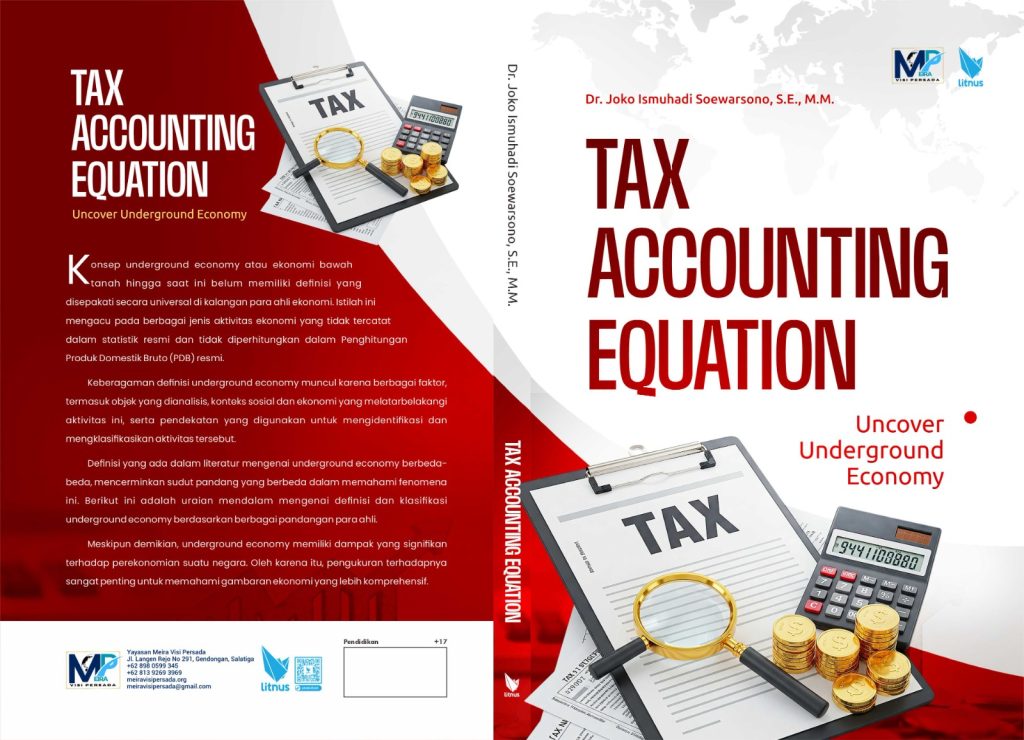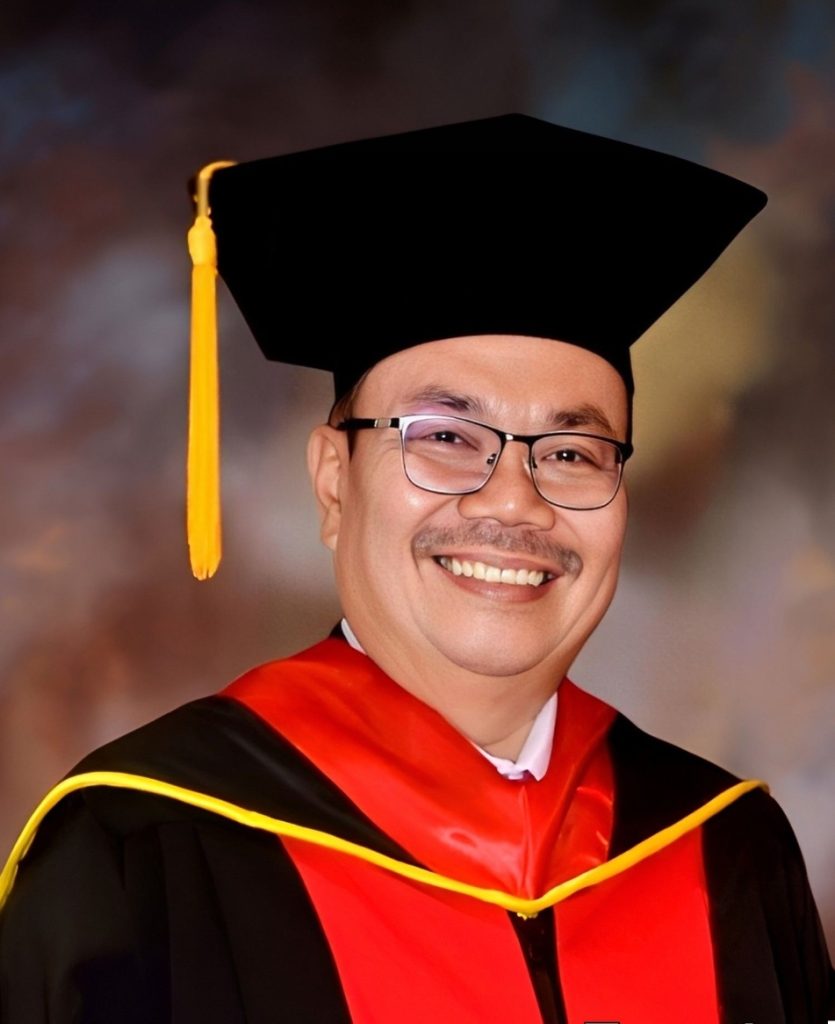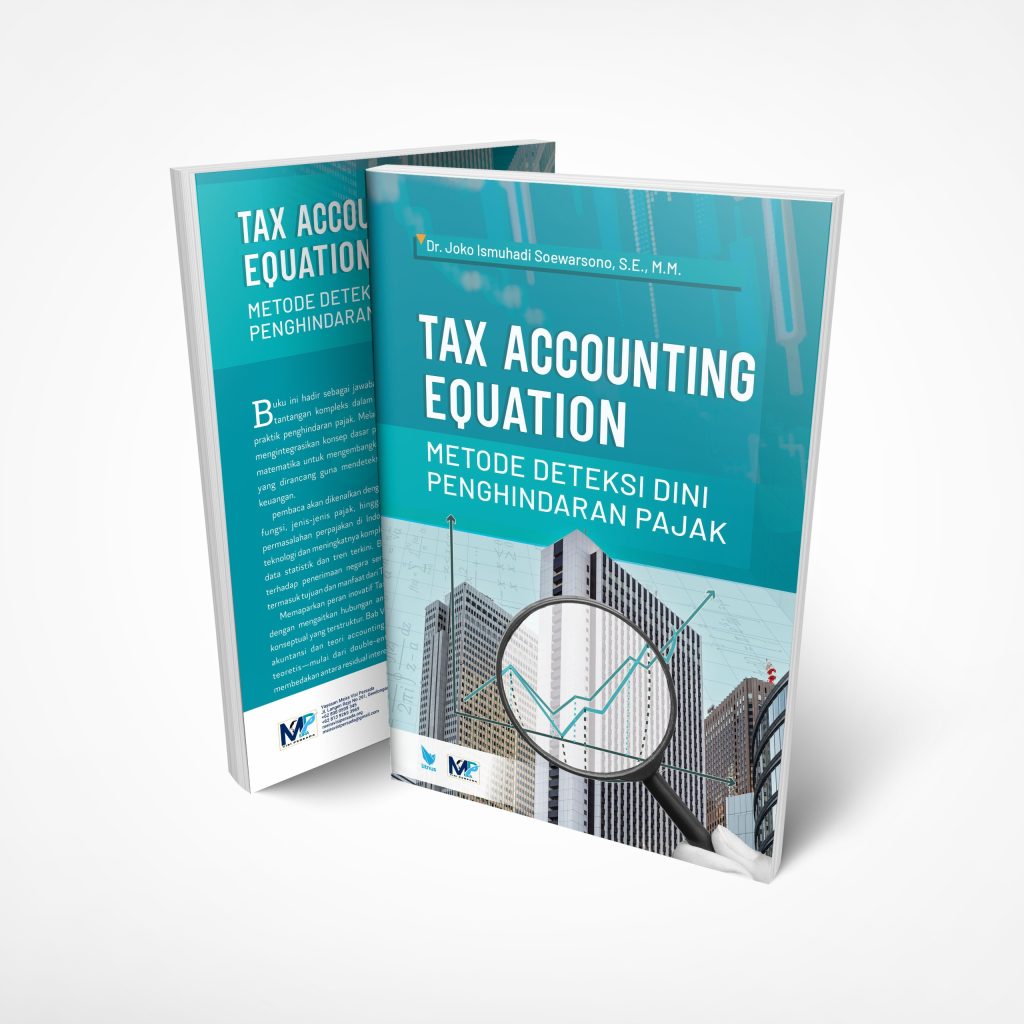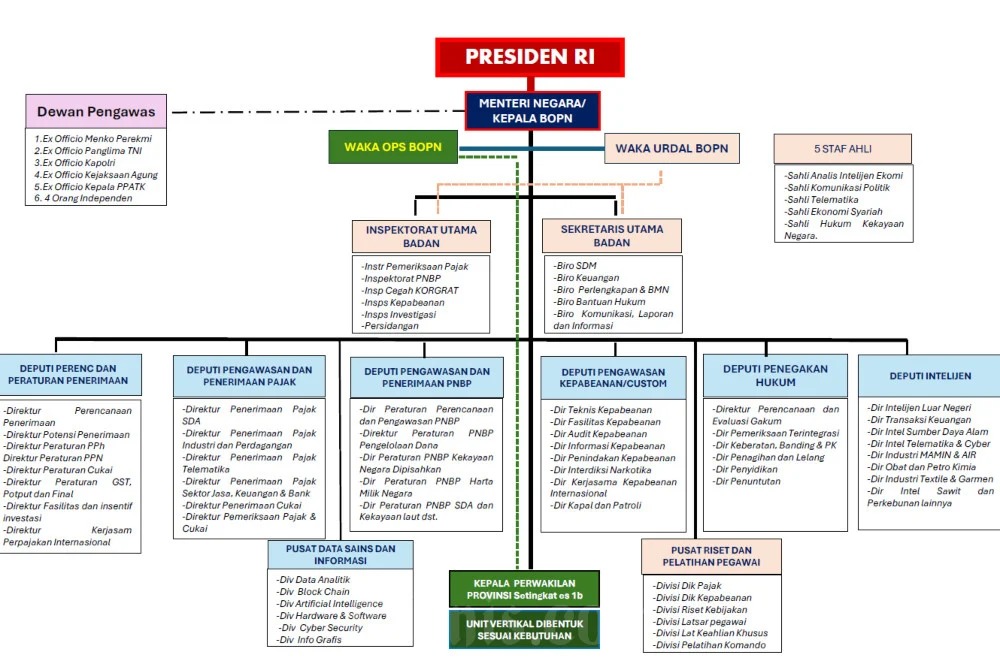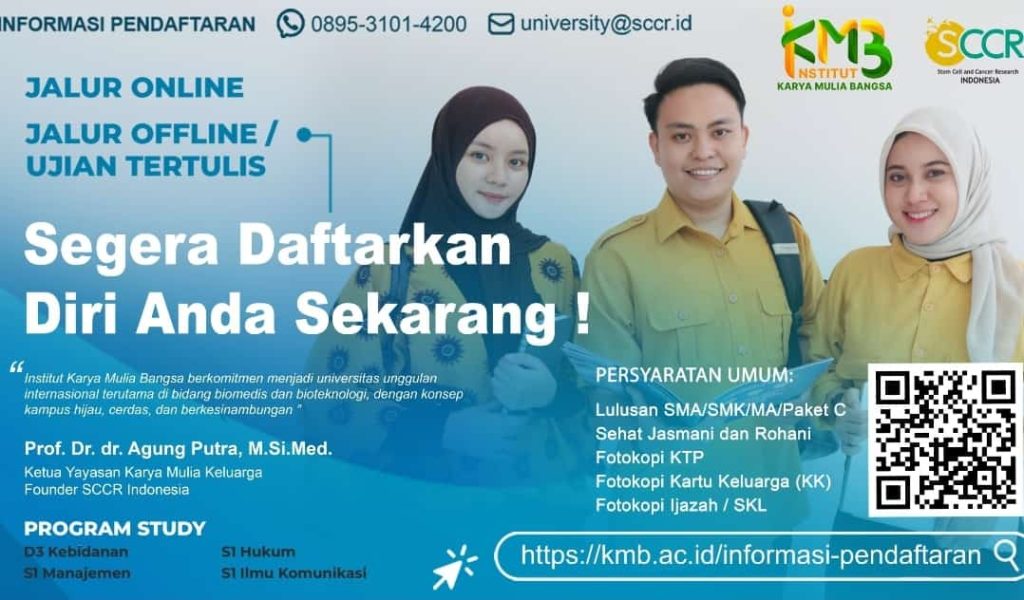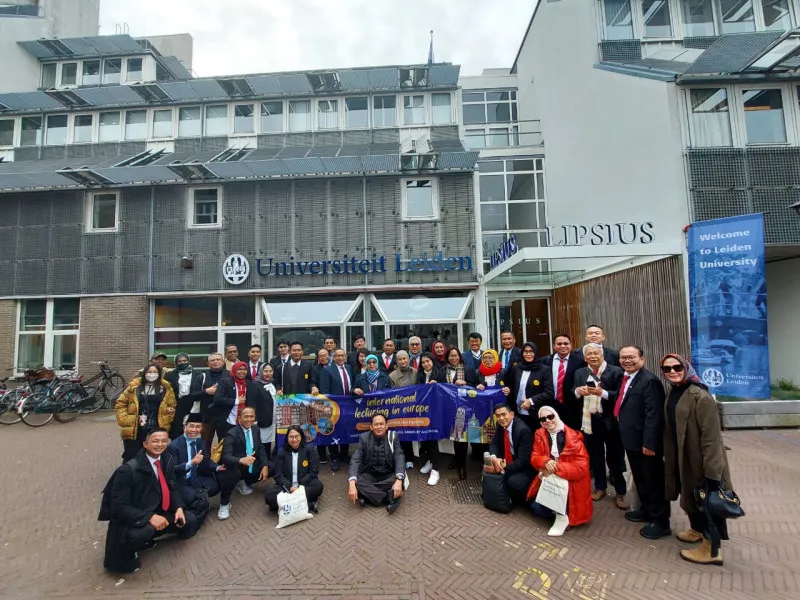
Dr. Joko Ismuhadi’s Novelty Tax Accounting Equation: A Forensic Tool for Enhanced Tax Enforcement
- Ekonomi
Sunday, 20 April 2025 00:20 WIB

Jakarta, fiskusnews.com:
The increasing sophistication of tax avoidance schemes worldwide presents a significant challenge to revenue authorities, necessitating the adoption of innovative forensic accounting tools to ensure the integrity of tax systems and the fair collection of public revenue. In this context, Dr. Joko Ismuhadi, a distinguished scholar-practitioner from Indonesia, has developed the Novelty Tax Accounting Equation (TAE). Dr. Ismuhadi brings a unique perspective to this challenge, drawing upon his extensive practical experience as a Senior Tax Auditor at Indonesia’s Directorate General of Taxes and a strong academic foundation, holding doctorates in Accounting from Universitas Padjadjaran and Tax Law from Universitas Borobudur. This combination of real-world exposure to tax enforcement issues and rigorous academic training has been instrumental in his conceptualization of the TAE. The TAE represents a targeted evolution of classical accounting principles, specifically reconfigured as a forensic instrument designed for the early detection of intricate tax avoidance tactics, particularly within economic environments characterized by substantial underground activity. Dr. Ismuhadi formalized the TAE in two equivalent mathematical forms: Revenues = Expenses + Assets – Liabilities and Revenues – Expenses = Assets – Liabilities, directly linking the operational dynamics reflected in the income statement to the financial positions presented in the balance sheet. Given Indonesia’s considerable underground economy and the persistent issues of tax base misstatement, the TAE holds particular significance as a potentially robust analytical approach for the nation. By focusing on the fundamental relationship between revenues, expenses, assets, and liabilities, the TAE offers a structured method for identifying anomalies indicative of tax avoidance. Positioned alongside Luca Pacioli’s foundational accounting equation (Assets = Liabilities + Equity), Dr. Ismuhadi’s TAE, with its focused lens on the interplay between revenue and expense, suggests a potential for a similar level of enduring impact on global tax enforcement methodologies, especially if its principles can be effectively adopted and adapted across diverse jurisdictions [Comparison to Pacioli and “World Legacy” Potential section in the initial prompt].
The development of the Tax Accounting Equation (TAE) by Dr. Joko Ismuhadi represents a significant step in the evolution of accounting principles, specifically tailored for the purpose of forensic tax analysis. This evolution can be traced back to Luca Pacioli, who in 1494 codified the foundational accounting equation: Assets = Liabilities + Equity. This equation forms the bedrock of the double-entry bookkeeping system, ensuring that every financial transaction is recorded in at least two accounts, thereby maintaining the balance of the accounting ledger and providing a fundamental mechanism for detecting errors in financial record-keeping [Pacioli’s Foundational Principle section in the initial prompt]. Over time, scholars and practitioners expanded upon Pacioli’s basic model to create the Expanded Accounting Equation, which incorporates revenues, expenses, and dividends to provide a more detailed understanding of the changes in equity over an accounting period. Further advancements led to the development of a cohesive Mathematical Accounting Equation, which emphasizes the algebraic rearrangement of all financial elements to analyze various financial relationships and gain deeper insights into a company’s financial health. Building upon this established lineage of accounting principles, Dr. Ismuhadi derived the Tax Accounting Equation (TAE) with the explicit aim of interlinking the elements of the profit and loss statement (Revenues and Expenses) with the accounts on the balance sheet (Assets and Liabilities) to specifically identify and expose tax-relevant distortions and anomalies that may indicate tax avoidance]. Dr. Ismuhadi presents the TAE in two mathematically equivalent forms: Revenues = Expenses + Assets – Liabilities and Revenues – Expenses = Assets – Liabilities. These two forms are mathematically interchangeable and represent the same fundamental relationship [Mathematically section in the initial prompt]. The primary purpose of the TAE is to serve as a forensic accounting tool, empowering tax examiners to: first, detect reclassification schemes, such as the strategic misrecording of taxable sales revenues as liabilities through the use of clearing accounts, a tactic employed to artificially understate taxable income ; and second, uncover recharacterization tactics, which involve the use of complex financial structures like intricate foreign-exchange transactions or back-to-back loan arrangements designed to disguise the true nature of income streams, thereby avoiding or reducing tax obligations. By systematically applying the TAE to a taxpayer’s financial statements, anomalies in the inherent relationship between the items reported on the profit and loss statement and the positions presented on the balance sheet become readily apparent, effectively flagging specific cases that warrant a more thorough and in-depth investigation by tax authorities. Dr. Ismuhadi’s motivation for developing the TAE originated from his observations of corporate taxpayers who consistently reported financial losses year after year without ever facing bankruptcy, a phenomenon that suggested potential manipulation of financial records to minimize their tax contributions. The core rationale underpinning the TAE’s formulation is its deliberate focus on examining the intrinsic connection between a company’s revenue-generating activities (Revenues and Expenses) and its overall financial standing (Assets and Liabilities) as depicted in its balance sheet. The TAE is designed to act as an initial “red flag” for tax authorities, highlighting unusual or unexpected inverse relationships within financial statements that could be indicative of tax avoidance practices, thereby prompting further scrutiny of these potentially problematic areas.
Dr. Ismuhadi’s development of the Tax Accounting Equation (TAE) is noted as a key aspect of his contribution to the field of taxation, described as an “innovative mathematical model” designed to enhance both tax detection and planning capabilities. His doctoral research at Padjadjaran University focused on advanced tax planning and financial strategies, a domain likely encompassing the theoretical framework and empirical testing of the TAE. While the TAE itself may not yet be extensively discussed in mainstream academic journals indexed by platforms like Google Scholar , it is recognized as having the potential to stimulate further research and discussion within the academic community, particularly in the specialized areas of forensic tax accounting and the application of quantitative methods to tax analysis. Dr. Ismuhadi’s affiliation as a PhD student at Padjadjaran University and his research profile on platforms such as ResearchGate highlight his expertise in relevant areas, including tax planning, financial engineering, and valuation. His participation in conferences, as evidenced by his conference papers on topics like the legal protection for default debtors in online loan agreements and intellectual property rights on traditional knowledge, indicates his engagement with contemporary legal and financial issues, even if these publications do not directly address the TAE. Academic journals such as the “Accounting Studies and Tax Journal (COUNT),” which covers theoretical and applied research in accounting and tax , and the “Journal of Accounting and Taxation” represent potential avenues for future scholarly discourse and publication related to the TAE. Although a direct search for academic publications specifically detailing the TAE on Google Scholar did not yield results within the provided material, the description of the TAE as a “novel” approach suggests its potential to contribute to the body of academic knowledge in tax and accounting.
Dr. Ismuhadi’s position as a Supervisor and Tax Auditor at Indonesia’s Directorate General of Taxes provided the crucial practical foundation for the development of the TAE. The TAE was conceived and formulated with a specific focus on addressing the intricacies of tax compliance within Indonesia’s large-corporate sector, indicating its practical orientation towards the national tax landscape. It is intended to serve as a proactive tool for the Directorate General of Taxes, enabling them to enhance both tax revenue collection and the enforcement of compliance by facilitating the early identification of potential tax avoidance activities. The TAE has been presented as a valuable analytical “tool” for the Directorate General of Taxes (DJP) to aid in the early detection of Underground Economy Activity (UEA), highlighting its potential utility in tackling a significant challenge within the Indonesian tax system. To illustrate the practical application of the TAE, Dr. Ismuhadi has utilized real-world examples from key Indonesian industries, such as the Crude Palm Oil (CPO) industry and the Cigarette industry, demonstrating its relevance to specific sectors of the national economy. The underlying aim of the TAE is to provide a quantitative framework that allows for the early identification of potentially misleading accounting transactions, thereby improving the efficiency and effectiveness of tax audits conducted by the Directorate General of Taxes. Furthermore, the TAE is recognized as a forensic accounting tool specifically tailored for Indonesian tax analysis, underscoring its practical relevance to the national context. The TAE has also garnered public attention and sparked discussions, particularly on online platforms like YouTube, indicating a broader awareness within Indonesia of its potential to modernize traditional tax analysis methods and combat tax evasion. The aspiration is for the TAE to become a standard analytical tool for Taxpayer Financial Statement Analysis across various business sectors in Indonesia, ultimately contributing to the Directorate General of Taxes’ ongoing efforts to explore and realize more optimal tax revenue potential.
While the initial concept of the TAE holds promise for global tax enforcement, the provided research material does not offer direct evidence of its discussion, adoption, or adaptation by tax authorities or academic institutions in countries outside of Indonesia. The primary focus of the available information is firmly within the Indonesian context. The initial prompt does suggest a potential “world legacy” for the TAE, provided it can be effectively adopted and adapted across various international jurisdictions [Comparison to Pacioli and “World Legacy” Potential section in the initial prompt]. The TAE’s perceived adaptability to diverse regulatory environments and its scalability to entities of varying sizes are highlighted as factors that could support its potential for global relevance [Comparison to Pacioli and “World Legacy” Potential section in the initial prompt]. The increasing global trend towards the standardization of accounting practices through the widespread adoption of International Accounting Standards (IAS) and IFRS could potentially create a more favorable environment for the introduction and acceptance of globally applicable forensic accounting tools like the TAE. The potential impact of IFRS adoption on tax accounting practices in numerous countries indicates a global interest in the intersection of accounting standards and taxation, suggesting a possible avenue for future consideration of the TAE internationally. Moreover, the OECD’s “two-pillar” international tax approach, aimed at establishing a global minimum corporate tax rate, reflects a worldwide effort to address tax avoidance by multinational enterprises, a challenge that the TAE could potentially contribute to. The ongoing movement towards convergence between different accounting standards, such as U.S. GAAP and IFRS, points to a global trend towards more unified financial reporting practices, which might facilitate the understanding and potential adoption of analytical tools like the TAE across different countries. However, it is important to note that some countries have experienced challenges in ensuring the compatibility of international accounting standards with their specific domestic tax systems , highlighting the need for careful consideration of local regulations if the TAE were to be implemented internationally. The emergence of “tax governance” as a significant concept in the international tax landscape also reflects a growing global focus on ensuring responsible and transparent tax practices, an area where the TAE could potentially play a role.
The Tax Accounting Equation (TAE) has been described as an “innovative mathematical model” specifically designed to enhance both tax detection and tax planning capabilities, indicating a recognition of its potential value by accounting and tax professionals. It is perceived as having the potential to “modernize traditional accounting methodologies” employed in tax analysis, suggesting that experts see it as a significant step forward in the field. The TAE offers a “novel, data-driven approach” to identifying potential instances of tax evasion and avoidance by focusing on the relationships between key components of financial statements, which is viewed as a strength in the current landscape of tax enforcement. It is anticipated that the TAE can provide tax authorities with “valuable insights” into the patterns and methods commonly utilized by those seeking to evade or avoid their tax obligations, making it a potentially powerful tool for tax administration. However, public discussions surrounding the TAE have also acknowledged its limitations, most notably its reliance on the accuracy and integrity of the financial statements being analyzed and its primary focus on quantitative data, which might mean it overlooks more complex, qualitative aspects of tax avoidance schemes. Despite these limitations, the TAE is seen as a valuable complement to other established forensic accounting techniques, such as sophisticated data analytics, potentially creating a more comprehensive and robust approach to strengthening tax enforcement efforts. It has been characterized as an “early warning system” capable of detecting potential tax avoidance activities at an early stage, allowing for timely intervention by tax authorities. Furthermore, the TAE is expected to contribute to enhancing the efficiency of tax audits by enabling tax auditors to better focus their limited resources on cases that are flagged as high-risk based on the equation’s analytical output.
The Tax Accounting Equation (TAE) presents a unique approach to forensic accounting for tax avoidance by offering a specific, mathematically formulated equation that focuses on the relationship between the income statement and the balance sheet. This distinguishes it from many other established forensic accounting methodologies. Forensic accounting, as a broader discipline, involves the application of accounting, auditing, and investigative skills to examine financial records for potential use in legal proceedings, including those related to tax matters. Various techniques are employed in forensic accounting, such as data analytics and data mining to identify anomalies and patterns indicative of fraud. Transaction tracing is used to follow the flow of funds and uncover suspicious movements. Digital forensics plays a crucial role in analyzing electronic records and digital footprints to gather evidence. Statistical methods like Benford’s Law can be applied to detect irregularities in numerical data. Forensic accountants also utilize interview techniques and document analysis to gather information and evidence. In the context of tax evasion, indirect methods of income reconstruction, such as the Net Worth Method, the Cash Expenditure Method, and the Bank Deposit Method, are often used to establish unreported income by analyzing a taxpayer’s financial activities and assets. Forensic accountants are skilled at scrutinizing accounting entries, cross-referencing financial statements with external sources, and identifying behavioral patterns that deviate from normal practices, which can uncover schemes designed to evade taxes. While tax accounting primarily focuses on the preparation of tax returns and ensuring compliance with tax laws , forensic accounting, including the application of the TAE, is geared towards investigating potential financial wrongdoing, including tax fraud and evasion, often playing a crucial role in tax litigation. The fundamental accounting equation (Assets = Liabilities + Equity) serves as the foundation for all accounting analysis, including the TAE. While many forensic accountants may possess backgrounds in tax or audit , the TAE offers a distinct, mathematically driven approach specifically tailored for the detection of tax-related distortions within financial statements. This targeted formulation differentiates it from broader forensic techniques that might be applied to a wider range of financial crimes.
While the research material confirms the significant role of tax revenue in Indonesia’s economy and highlights the positive impact of tax administration reforms and forensic accounting in general , it does not contain specific studies or reports that directly assess the impact of Dr. Ismuhadi’s TAE on tax revenue collection or compliance rates within Indonesia. Indonesia’s Central Government Balance Sheet reflects substantial amounts of tax revenue and receivables, underscoring the importance of effective tax collection. Tax revenue consistently contributes a major share to Indonesia’s State Budget. However, Indonesia’s tax ratio has been noted as relatively low compared to other countries in the Asia Pacific region and among the G20 and ASEAN nations. Evidence suggests that tax administration reforms have had a positive impact on Indonesia’s tax yield, highlighting the importance of efficient tax administration for revenue generation. Improved tax administration can even have an effect comparable to raising corporate income tax rates, indicating the potential of better enforcement to increase revenue. The concept of tax buoyancy is crucial in understanding how tax revenues respond to economic changes in Indonesia. While the implementation of digital forensic activities in taxation in Indonesia has not yet shown a significant impact on overall tax revenue , research suggests that forensic accounting and tax forensic knowledge generally have a positive effect on preventing fraudulent financial statements, which indirectly contributes to improved tax compliance. Although there is no direct quantitative assessment of the TAE’s impact on tax revenue or compliance within the provided snippets, the potential of the TAE to enhance tax administration and forensic analysis suggests that its effective implementation by the Indonesian Directorate General of Taxes could lead to the identification of previously unreported income and a consequent increase in tax revenue, as well as a deterrent effect on tax avoidance, leading to improved compliance. Given Indonesia’s relatively low tax ratio, effective tools like the TAE could play a crucial role in improving tax collection efficiency over time.
Public discussions have acknowledged that the TAE, while innovative, has certain limitations. Its primary reliance on the accuracy of financial statements means that if these statements are deliberately falsified, the TAE’s effectiveness in detecting the underlying tax avoidance could be compromised. Sophisticated tax avoidance schemes often involve the manipulation of these very financial records, posing a challenge to the TAE’s standalone application. Furthermore, the TAE’s primary focus on quantitative data might limit its ability to detect more complex or nuanced tax avoidance strategies that rely on legal interpretations or the structuring of transactions in ways that technically comply with regulations but lack genuine economic substance. The current limited presence of the TAE in peer-reviewed academic literature could also be seen as a challenge to its broader theoretical validation and acceptance within the accounting and taxation fields. Rigorous academic scrutiny and testing would be beneficial in further establishing its credibility and identifying any potential theoretical weaknesses or areas for refinement. Additionally, if the TAE were to be considered for adoption in countries outside of Indonesia, its applicability might need adaptation to fit the specific legal and regulatory frameworks of those jurisdictions, as tax laws and accounting practices can vary significantly across nations. The TAE, being a mathematical equation, might primarily detect anomalies based on numerical inconsistencies, potentially missing tax avoidance strategies that are legally compliant in form but lack genuine economic substance or rely on interpretations of complex tax regulations.
Beyond the development of the Novelty Tax Accounting Equation (TAE), Dr. Joko Ismuhadi has made several other significant contributions to the fields of tax accounting and forensic accounting. His possession of a Doctor of Tax Law, in addition to his doctorate in Accounting, highlights his deep and comprehensive expertise in both the legal and financial aspects of taxation. His doctoral research at Padjadjaran University focused on advanced tax planning and financial strategies, indicating a broader academic interest in sophisticated aspects of taxation beyond just forensic analysis. Dr. Ismuhadi has also presented on a range of topics, including the legal protection for default debtors in online loan agreements and intellectual property rights on traditional knowledge, demonstrating his engagement with contemporary legal and financial issues beyond the immediate scope of tax accounting. His expertise extends across critical areas such as tax planning, financial engineering, corporate finance, valuation, and mergers and acquisitions, showcasing a comprehensive understanding of the broader financial landscape that is intricately linked to tax matters. Notably, Dr. Ismuhadi has proposed a revision to Article 4 paragraph (1) of the Indonesian Income Tax Law, aiming to address a perceived loophole that facilitates tax avoidance, highlighting his proactive approach to improving tax legislation. He has also advocated for the immediate creation of a ruling General Anti Avoidance Rule (GAAR) in Indonesia, reflecting his commitment to strengthening the legal framework against tax avoidance practices. Furthermore, he has emphasized the critical importance of the “substance over form” principle in tax law as a fundamental concept for preventing tax avoidance schemes that might technically comply with the letter of the law but not its intended spirit. Dr. Ismuhadi has also called for the development of specific guidance on the “Purpose Business Test” for loan transactions to further address potential loopholes in the tax law that can be exploited for tax avoidance purposes. His presentations and discussions have also focused on the potential of the TAE to effectively address the challenges posed by Indonesia’s significant underground economy and to aid in the recovery of lost state revenue resulting from tax crimes. He has actively participated in various discussions and webinars on current tax-related topics, indicating his ongoing engagement with the field and his willingness to share his extensive expertise. His work has been featured in media outlets such as Fiskusnews and Taxjusticenews, suggesting an effort to disseminate his research and ideas to a wider audience within Indonesia. Dr. Ismuhadi is also a member of key professional organizations, including Perkumpulan Tax Center dan Akademisi Pajak Seluruh Indonesia (Pertapsi) and Perserikatan Ahli Hukum Indonesia (Perkahi), demonstrating his active involvement in the professional community of tax experts in Indonesia.
In conclusion, Dr. Joko Ismuhadi’s Novelty Tax Accounting Equation (TAE) represents a significant and innovative contribution to the field of forensic tax accounting, offering a targeted, mathematically grounded approach to the early detection of tax avoidance. While the TAE builds upon the foundational principles of accounting established by Luca Pacioli and subsequent expansions, it specifically focuses on the interplay between the income statement and balance sheet to identify anomalies indicative of tax-related distortions. Although current academic recognition of the TAE appears limited in mainstream international journals, its potential to stimulate further research in forensic tax accounting is promising. The TAE holds particular relevance for Indonesia, given Dr. Ismuhadi’s direct involvement with the Directorate General of Taxes and the illustrative examples of its application in key national industries. While there is currently no direct evidence of international adoption, the global trends towards accounting standardization and the fight against tax avoidance suggest a potential future relevance for such innovative tools. Expert opinions acknowledge the TAE’s novelty and potential benefits in modernizing tax analysis, while also highlighting its limitations, such as its reliance on accurate financial data. Compared to other forensic accounting methods, the TAE offers a specific, equation-based approach tailored for tax avoidance detection. While the direct impact of the TAE on tax revenue and compliance in Indonesia has not yet been quantified in the provided material, its potential to enhance tax administration is evident. Criticisms and challenges primarily revolve around its reliance on the accuracy of financial statements and its focus on quantitative data. Beyond the TAE, Dr. Ismuhadi’s broader contributions to tax accounting and law, including his proposals for legal reform and expertise in various financial domains, underscore his deep commitment to improving tax governance.
To further develop, apply, and potentially broaden the adoption of the TAE, the following recommendations are offered:
- Conduct comprehensive empirical studies within the Indonesian Directorate General of Taxes to rigorously evaluate the TAE’s effectiveness in detecting various tax avoidance schemes across different sectors and to quantify its direct impact on tax revenue collection and compliance rates.
- Encourage further academic research within Indonesia to explore the theoretical underpinnings of the TAE in greater depth, refine its methodology based on empirical findings, and publish the results in reputable peer-reviewed journals to enhance its academic standing and facilitate broader scholarly discussion.
- Actively seek opportunities to present the TAE at international tax conferences, seminars, and forums to raise awareness among tax authorities, academics, and practitioners worldwide, fostering discussions about its adaptability and potential adoption in diverse jurisdictional settings.
- Develop and implement specialized training programs and resources for tax auditors within the Indonesian Directorate General of Taxes to ensure they are proficient in applying the TAE effectively in their audit processes, including clear guidance on interpreting the analytical outcomes and integrating them with other relevant forensic accounting techniques.
- Investigate the technical feasibility and potential benefits of incorporating the TAE into the existing tax audit software and data analytics platforms utilized by the Directorate General of Taxes to enable its widespread, efficient, and automated application in the routine analysis of taxpayer financial statements.
- Address the inherent limitations of the TAE, particularly its susceptibility to manipulation of financial statements, by developing and integrating complementary data verification techniques or by combining it with other forensic methods that can provide independent corroboration of the financial data being analyzed.
- Explore the potential for adapting and extending the application of the TAE to a wider range of business types and industries beyond its current focus, to broaden its utility as a versatile forensic tax accounting tool for various economic contexts.
- Establish a robust monitoring and evaluation framework to systematically track the practical application of the TAE within the Indonesian tax system, carefully identify best practices and challenges encountered during its implementation, and pinpoint areas for potential refinement and improvement, with the aim of sharing these valuable insights with other interested jurisdictions.
- Given Dr. Ismuhadi’s significant contributions to tax law reform proposals, including the proposed revision of Article 4 paragraph (1) of the Indonesian Income Tax Law and his strong advocacy for the implementation of a General Anti Avoidance Rule (GAAR), undertake a thorough review and give serious consideration to the implementation of these legal reforms to establish a more robust legislative environment for effectively combating tax avoidance.
- Support further research into the potential integration of the TAE with emerging technologies such as artificial intelligence (AI) and machine learning (ML) to explore opportunities for enhancing its predictive capabilities, improving its efficiency in analyzing large and complex datasets, and identifying more intricate patterns of tax avoidance that might not be readily apparent through traditional analytical methods.
Reporter: Marshanda Gita – Pertapsi Muda
Share
Berita Lainnya
KOMISI (Kelas Online akadeMISI) Seri Teori Pajak I Episode 6 bertajuk Pemahaman dan Penghitungan PPh Pasal 25
Komisi Unpad: Seri Teori Pajak I Episode 4 tentang Pemahaman dan Penghitungan PPh Final
Uncovering Underground Economy Activity: An Analysis of Dr. Joko Ismuhadi’s Tax Accounting Equation
Ekonom Dunia Prediksi Ekonomi Global Tumbuh 2,6 Persen pada 2024
Ismuhadi’s Equation: Analisis Kontribusi dalam Perpajakan Indonesia
KOMISI (Kelas Online akadeMISI) Seri Pajak Internasional Episode 4 bertajuk Prinsip & Mekanisme Tax Treaty
Rekomendasi untuk Anda

Berita Terbaru
Eksplor lebih dalam berita dan program khas fiskusnews.com
Tag Terpopuler
# #TAE
# #TAX ACCOUNTING EQUATION
# #TAX FRAUD
# #TAX EVASION

